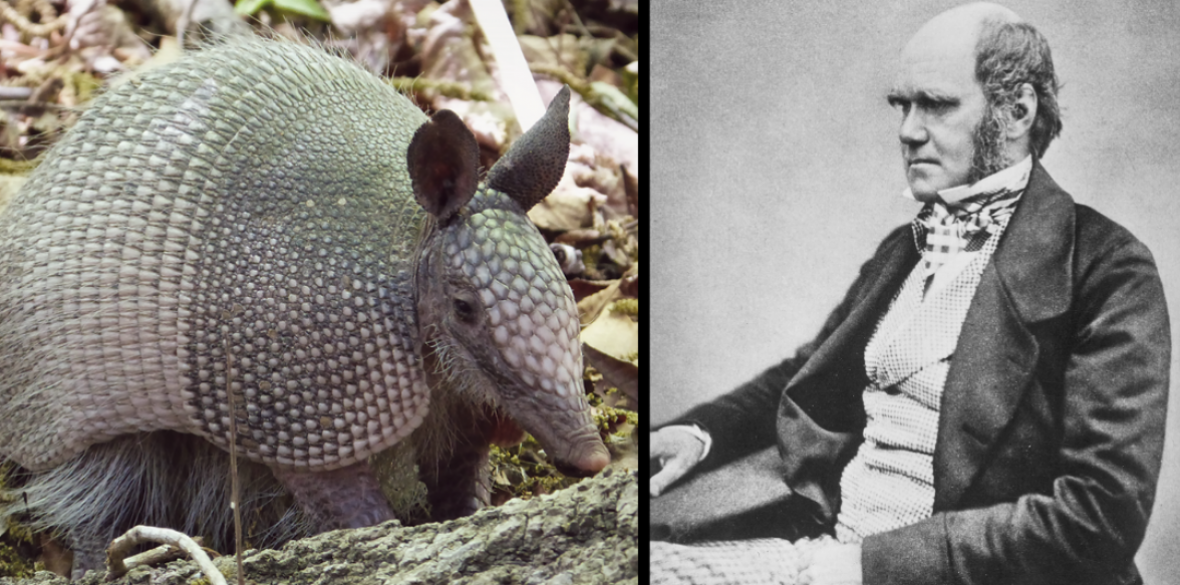This is the last article you can read this month
You can read more article this month
You can read more articles this month
Sorry your limit is up for this month
Reset on:
Please help support the Morning Star by subscribing here
MY RAMBLINGS a week or so ago brought some comments from regular readers. Was I really accusing their hero — and mine — Charles Darwin of eating rare and threatened animals like the giant Galapagos tortoise?
He did of course, and he wasn’t the only one. There are many scientists who eat the plants and animals they study.
Darwin, during the voyage of the Beagle, ate not only giant tortoises but also puma. He said they tasted remarkably like veal. He also dined on iguanas, armadillos and who knows what other curious beasts.
He even accidentally ate part of a flightless bird called a lesser rhea, after spending months trying to catch it so that he could describe the species.
Once he realised what he had eaten he got the cook to search through the bins for the skeleton beak, skin, feathers and other bits. Amazingly he recovered all the debris and they are now in the Natural History Museum.
Darwin had learnt his skills in preserving the remains of dead birds — even roasted ones — at the Edinburgh Museum. Darwin took weekly lessons in preparing the skins of birds from John Edmonstone, a freed slave and perhaps the best museum taxidermist in Britain.
The bird was previously unknown to science. Today it is known as Darwin’s rhea (rhea pennata), also known as the lesser rhea, a large flightless bird, the smaller of the two species of rheas still in existence.
It still takes real courage to be a natural scientist, even more so in the times of Darwin. You still have to visit harsh landscapes and dangerous habitats. Because you may be living off the land, a strong stomach doesn't hurt either.
Today there are regulations about how you use experimental animals and nobody will be eating endangered or rare species. However, students will often try tasting an insect or bug and you can often see someone tasting a new foodie insect on TV.
You’ll also need to avoid any species that might have poisonous flesh or organs. Plants too can produce deadly poisons.
Some scientists, particularly those in agricultural or food science, are lucky in that they study delicious plants and animals. Some will be looking at — and tasting — trendy organisms like kelp, wild boar, blueberries, trout, lobster, even strawberries and other fruit or other exotic ingredients. It’s a hard job, but someone has to do it.
They are following precisely in the epicurean footsteps of Darwin himself. Darwin was quite the adventurous eater, even before he became a naturalist.
At Cambridge, Darwin was a member of the Glutton Club, a group of students devoted to devouring “birds and beasts which were before unknown to human palate.”
According to a student friend, they tasted hawk and a heron and even the booming wading bird the bittern. The club also ate a brown owl. Darwin said it was indescribable.
Once he headed south on the Beagle, his taste for food choices continued to evolve. He not only ate giant tortoises, but tried drinking their bladder contents: “The fluid was quite limpid, and had only a very slightly bitter taste.”
He ate 9kg giant rat, probably an agouti — “The very best meat I ever tasted,” he declared.
That’s a tough act to follow. But modern biologists are doing their best.
The list of animals and plants that scientists have eaten includes bluegill, sea urchin, ants, bees, beetles, weeds, maggots, blackberries, abalone, pink cusk eel, cicadas, roe deer, woodcocks, crayfish and seabirds.
In 1971, Richard Wassersug published a paper that tested the comparative palatability of eight species of tadpoles. His volunteers — mostly his students — reckoned the tadpoles were great with beer. Today, this study would never be permitted — but that was the 70s.
“In truth,” said the scientist, “None of the tadpoles tasted sweet and delicious.” One species of tadpole stood out — toad tadpoles. “It was one of the worst things I’d tasted,” he says, “So astonishingly bitter. A teaspoon full of Tabasco sauce might get you close.”
Wassersug also once got into a salamander-eating contest. Wassersug’s competitor ate six salamanders; Wassersug ate only one. “I took mine with a mouthful of vodka,” he says, “and did swallow it.” How did it compare with tadpoles? “I didn't bother to taste it,” he says.
When a student Mark Siddall, a leech expert and now curator of invertebrates at the American Museum of Natural History, took a break from studying leeches to drink beer around a campfire, someone dared him to eat a leech.
“Ok,” he thought, “But it might be a little dangerous to pop a leech in my mouth. It might go crawling down my windpipe if I lost control of it.” So, he anesthetised it with whisky and roasted it over the campfire. “It tasted a lot like charcoal,” he noted.
One great argument for eating study organisms is that it’s an excellent way to dispose of invasive species.
Sarah Treanor Bois did her PhD research on invasive plants and once attended an invasive species cook-off.
Some of the better dishes she tried featured pulled nutria — the wild Latin American water rat that is trying to invade the Broads national park.
Also on the menu were house sparrow drumsticks and bullfrog legs, with garlic mustard pate and Himalayan blackberries on the side. “Not only is eating invasives a great way to bring attention to the problem,” she told us, “Many of them taste great. And you never feel bad about over-harvesting.”
Let’s look at the big picture. We all tend to eat foods we are familiar with. So why are scientists so comfortable eating unusual things?
Let’s look at a real expensive and luxury food, the lobster. The contents of a lobster is not dramatically different from the contents of a crayfish and a crayfish isn’t that different from a grasshopper — but to many, a grasshopper is not familiar as food.
I’ve written before about feasting on American red signal crayfish. This unwelcome immigrant has escaped from restaurants and farms. Not only does it crowd out our white clawed native fish but it also carries a crayfish pox that is harmless to them but fatal to our natives.
I eat as many as I can — and always drink toast to my great hero Darwin and his most remarkable diet.











